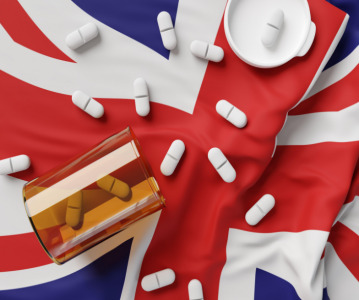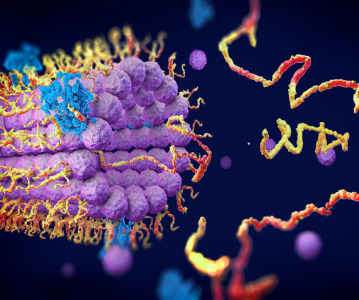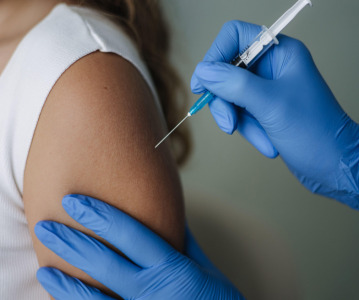New buprenorphine wafers could help thousands battling opioid addiction

When compared with current hard sublingual tablets, the novel formulation dissolved quickly with no increased safety concerns and no demonstrable difference in efficacy.
Martindale Pharma has announced results from a Phase II randomised study published in European Addiction Research on Espranor – the rapidly dissolving oral lyophilisate formulation of buprenorphine. Data on this unique opioid substitution therapy (OST) show that, when compared with current hard sublingual (under the tongue) tablets, the novel formulation dissolved quickly with no increased safety concerns and no demonstrable difference in efficacy. Espranor represents the first major advance in OST for 10 years. With tens of thousands of people across the UK suitable for treatment with buprenorphine, data such as these may support wider prescribing, improved care and reduced burden on healthcare providers who supervise OST.
“Buprenorphine plays a vital role in opioid substitution therapy for many patients. However, it is recognised that a significant barrier has been the time-consuming and often stigmatising process of supervising its administration,” said Dr Baillie, Group Medical Director of Martindale Pharma. “These data demonstrate that using this rapidly-dissolving formulation of buprenorphine may offer practical benefits without compromising safety or efficacy.”
The study assessed the safety of the new buprenorphine oral lyophilisate wafer versus standard sublingual buprenorphine tablets, (Subutex). Patients were opioid-dependent, commencing buprenorphine maintenance and were treated in a specialised clinical trials or addictions treatment facility. Results showed that 96.3% of Espranor administrations achieved partial disintegration on the tongue within 15 seconds, meaning at this time point the wafer could no longer be removed from the mouth intact. Overall the median time to complete disintegration of the Espranor wafer was two minutes compared with 10 minutes for standard sublingual buprenorphine tablets (p< 0.0001). There were no significant between-group differences in opiate-withdrawal phenomena, craving or adequacy of “hold,” or respiratory function. No serious adverse events (AEs) were observed. Although more mild AEs and treatment-emergent AEs were observed with the wafer formulation, all events were transient and self-limiting. Pharmacokinetic analysis found greater bioavailability of buprenorphine but not nor-buprenorphine with Espranor.
“It is vital that we find better ways of supporting people across the UK battling opioid addiction,” said Annemarie Ward, CEO of Faces and Voices of Recovery. “These results are promising as they indicate that, by just using a simpler form of buprenorphine, we may increase its use and reduce some of the problems seen with conventional pills. Having another choice of treatment available is always a cause for celebration. The challenge now will be to explore how we help those on the front lines of OST understand how and when it should be used.”
Related News
-
News A Day in the Life of a Start-Up Founder and CEO
At CPHI we work to support Start-Up companies in the pharmaceutical industry and recognise the expertise and innovative angles they bring to the field. Through our Start-Up Programme we have gotten to know some of these leaders, and in this Day in the ... -
News Biopharmaceutical manufacturing boost part of new UK government budget
In their national budget announced by the UK Labour Party, biopharmaceutical production and manufacturing are set to receive a significant boost in capital grants through the Life Sciences Innovative Manufacturing Fund (LSIMF). -
News CPHI Podcast Series: The power of proteins in antibody drug development
In the latest episode of the CPHI Podcast Series, Lucy Chard is joined by Thomas Cornell from Abzena to discuss protein engineering for drug design and development. -
News Amgen sues Samsung biologics unit over biosimilar for bone disease
Samsung Bioepis, the biologics unit of Samsung, has been issued a lawsuit brought forth by Amgen over proposed biosimilars of Amgen’s bone drugs Prolia and Xgeva. -
News CPHI Podcast Series: Why we need to consider women in clinical trials
The latest episode of the CPHI Podcast Series with Lucy Chard covers women's health, specifically women's representation in clinical trials, the associated bias, and the impacts on health for this population. -
News US FDA does not approve MDMA therapy for PTSD, requests more data
The MDMA-based therapeutic developed by Lykos Therapeutics, a California-based Public Benefit Corporation (PBC), has been reviewed and unapproved by the US FDA. The regulator has requested additional phase III trial data for further safety and efficacy... -
News Novartis and Viatris latest facing lawsuit over HeLa cell misuse
Global pharmaceutical companies Novartis and Viatris are the latest hit with a lawsuit claim pertaining to alleged misuse of the ‘HeLa’ cell line from the estate of woman whose cancerous tissue cells were taken without consent. -
News Sanofi invests billions into Frankfurt insulin production site
French pharmaceutical company Sanofi have announced an investment of EUR1.3 billion at their existing BioCampus site in Frankfurt am Main for the expansion of insulin production.
Position your company at the heart of the global Pharma industry with a CPHI Online membership
-
Your products and solutions visible to thousands of visitors within the largest Pharma marketplace
-
Generate high-quality, engaged leads for your business, all year round
-
Promote your business as the industry’s thought-leader by hosting your reports, brochures and videos within your profile
-
Your company’s profile boosted at all participating CPHI events
-
An easy-to-use platform with a detailed dashboard showing your leads and performance



.png)

.png)
.png)
.png)